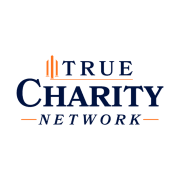The Chalmers Center, Adapted from Becoming Whole and When Helping Hurts
Listen to this article:
Is “the American Dream” our goal?
Effective, sustainable poverty alleviation requires us to know both where we are trying to go and how we can get there. In other words, we need a “story of change”—or as it is often referred to in the social services sector, a “theory of change”—that fits with reality.
At its core, a story of change is your ministry’s answer to two fundamental questions:
- What is the goal of life?
- How can that goal be achieved?
Take a moment and reflect on these two questions. It is possible that you’ve never consciously answered these questions before, but you may be living out of unconscious answers handed down from the culture around you.
Without really recognizing it, as Christians in a developed society, we tend to separate the spiritual and material realms. Some theologians have called this a “gospel of the gap”—we cry out to God when we can’t see a way out of a given situation, but we expect the social, economic, medical, educational or political systems to fix most problems we face day to day. This often leads to a story of change in which the goal of life is to trust Jesus and get our souls to heaven for eternity while we pursue the American Dream of material prosperity here and now—not just for ourselves, but for we serve in our ministries.
The tragic irony is that the unstated assumption at the foundation of most of our poverty alleviation efforts is that the goal is to make people in material poverty into people just like us. We try to turn America’s impoverished communities into its affluent suburbs—even though study after study shows that middle- to upper-income Americans are increasingly dissatisfied with our own lives!
This “baptized American dream” vision of ministry can’t fully restore broken communities to flourishing because it’s misdiagnosing the problem. So, what’s the answer?
Moving towards a better story
The reality is that there is no simple solution or one-size-fits-all fix to a complex issue like material poverty. Effectively fighting poverty starts with recognizing that we all have broken relationships with God, self, others, and creation, and that true poverty alleviation flows from the restoration of each of these relationships by Christ’s power. This is God’s story of change—the restoration of all things by the cross of Christ (cf. Col. 1:15-20).
How do we put this into practice? Evaluate and reimagine or replace our existing practices in favor of those that empower and equip our communities in light of God’s story of change.
As you do, consider a few ministry design principles:
-
-
Learn from existing “best practices.”
-
For years, churches and ministries have plunged into microfinance, job training, and other technical areas of development using approaches that are likely to do more harm than good. When best-practice information is widely available, there is no excuse. At the same time, however, there are times when we need to modify (or to reject altogether) the best practices of our larger culture—different stories of change imply different sets of best practices. In short, we should “do our homework” before launching into new ministry endeavors.
-
-
Start by focusing on assets, not needs.
-
When considering poverty as a whole, we often first think about the lack of some material resource, which aligns our minds with a needs-based approach. This mindset tends to assume that resources, solutions, and initiative to solve a problem will come primarily from outside—from a ministry, church, government, or individuals—rather than from those experiencing material poverty in a given community. In contrast, an asset-based approach walks alongside those experiencing material poverty, starting with the biblical truth that we all bear the image of Christ. Brokenness does not negate the fact that all people are image-bearers, nor does it negate that we are called to steward our gifts, resources, and abilities. An asset-based approach does not ignore material needs; rather, it identifies, celebrates, and mobilizes resources, looking for what God is already doing in a community before we show up. A ministry seeking to use an asset-based approach should provide material resources where appropriate and in such a way that builds upon the use of gifts, abilities, and resources.
-
-
Use participatory rather than blueprint approaches.
-
Poverty alleviation efforts should avoid “blueprint” approaches that impose a predetermined plan on an individual, family, or community experiencing material poverty, which robs them of ownership and dignity and of sustained change. Conversely, a participatory approach asks what steps an individual, family, or community believe should be taken to improve the situation. This way of thinking is consistent with biblical truth: as image bearers, those experiencing material poverty are called to be the primary stewards of their insights and abilities. Individuals are empowered to make decisions about the stewardship of their resources, to act upon their decisions, to evaluate the results of their decisions, and to repeat the process for the benefit of their own lives and of their communities. In this light, participation is not just a means to an end but, rather, the most important end.
Seeking Discernment
Of course, material poverty is ultimately a spiritual problem stemming from human beings’ fall into sin. As such every step of true poverty alleviation must be guided by the Holy Spirit.
Ask yourself (and your ministry) this question:
“If I take this action, will I contribute to or detract from the long-term goal of empowering this person or community to be more like who God created them to be living in the right relationship with God, self, others, and the rest of creation?”
Consider best practices, focus on assets, use a participatory approach, and ask the Holy Spirit for wisdom and discernment. Then, move forward humbly but without fear. Jesus Christ is actively present, and He will accomplish His purposes through us, sometimes even in spite of our mistakes.
The Chalmers Center reframes ministry practices to align with transformative development and God’s narrative of change, offering insights into poverty alleviation that go beyond band-aid solutions to restore true flourishing. Learn more here to continue equipping your church or ministry.
The Chalmers Center is a Business Partner of the True Charity Network. Members can access significant discounts on Chalmers foundational training and client-facing classes like Faith & Finances and WorkLife. Learn more about Network membership.

 Jon Barrett
Jon Barrett










